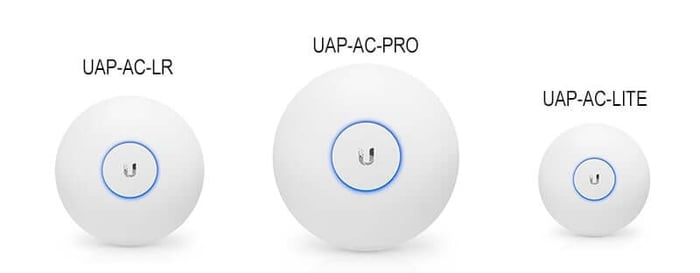Tips for Improving Your Wireless Access Point's Range

There are plenty of dirty little secrets in the computer hardware industry, like how hard drives never quite have as much space as advertised. However, one of the dirtiest is how blatantly many manufacturers will overestimate the range of WiFi access points. It's really not an exaggeration to say that you will never get the same broadcast range from an access point as what it claims on the box.
Those numbers are purely hypothetical, based on what the AP might be able to achieve in a clean room isolated environment, with absolutely no competing radio signals or any structural barriers to transmission. Their testing procedures are as far from real-world scenarios as you can get.
Of course, this leaves the problem of trying to maximize the transmission range of your WiFi access points. Here are some ideas to help improve the situation.
Six Ways To Improve Your Wireless Access Point Range
1 - Upgrade to 5ghz Access Points
Buying new hardware isn't always a viable solution, but when it comes to WiFi, it may be the best option if you're still using devices on the 2.4ghz radio frequencies. 2.4ghz is an incredibly congested RF band, used by hardware ranging from cordless phones to most Bluetooth devices. That creates a lot of competing signals, and it may not be possible to work around them. 5ghz is a much cleaner band, and allows better performance from WiFi APs and the latest 802.11ac wave 2 devices.
Also, be on the lookout for upcoming WiFi standards 802.11af, -ah, and -ay, which are all going to utilize less-common radio frequencies. 802.11ah, in particular, will emphasize broadcast range.
2 - Maintain line-of-sight.
As a rule of thumb, if all your APs are within sight of at least one other AP, you're not going to have holes in your coverage. Obviously, this may not always be possible, but it's good to keep in mind - particularly if you're more interested in guaranteeing 100% coverage than trying to heavily optimize your WiFi purchase.
3 - Get better antennas.
A lot of WiFi access points, even enterprise-grade, are relying on relatively small, low-power internal antennas which are continually broadcasting in a 360-degree bubble aka omni-directional. If your AP has external antenna ports, adding some real directional antennas should significantly increase its range, as well as giving you more options in targeting your WiFi signal to create optimal coverage.
4 - Try different channels.
All WiFi access points (as well as other devices in the 2.4ghz and 5ghz bands) are capable of broadcasting on multiple channels, which are generally just labeled 1, 2, 3, etc. If one particular channel is crowded, another may be totally clear. On Windows machines, try running the Command Prompt command netsh wlan show all which will give a summary of local WiFi activity, including channel usage.
Some modern network brands - like Meraki and ADTRAN - will automatically use channel-hopping without manual configuration.
5 - Always avoid water and steel.
Few things in a building's structure are better at blocking WiFi transmission than water and/or steel. You can pretty much assume an off-the-shelf AP will not be able to broadcast effectively through them. You'll either need to move the AP, or else get a different antenna.
6 - Have a professional WiFi survey done.
It costs a little bit, but most networking-focused vendors have the tools and knowhow to conduct a wireless network assessment of your building and its local radio environment. They can create a heatmap showing the optimal locations for WiFi placement, along with personalized suggestions for cutting down on radio interference. Often, they can significantly cut your overall WiFi AP buy through optimization.
To learn more about WiFi optimization options, just contact Hummingbird!



